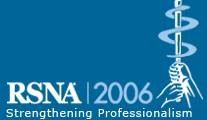
Abstract Archives of the RSNA, 2006
Timothy Gerard Scanlon MD, Presenter: Nothing to Disclose
John Murray MBBCh, Abstract Co-Author: Nothing to Disclose
Due to high patient throughput in radiology departments, there is a potential for significant cross-infection with MRSA. This has not been previously evaluated. The aim of this study was to detect the point prevalence of MRSA in a tertiary referral Radiology department.
This was a prospective study performed over a 3 day period. High risk sites in CT,MRI,Ultrasound,Barium room,Interventional room,Nuclear Medicine,Mammography unit and general x-ray rooms were identified by an Infection control nurse and 125 Copan Albumine swabs taken. They were analysed for MRSA in the microbiology laboratory using oxycillin culture media. Cleaning measures and techniques were reviewed and compared against best practice.
124 of the 125 swabs were negative for MRSA. The positive specimen was isolated from the Bore of the MR unit. This is a difficult area to clean satisfactorily. After evaluating cleaning methods of the MR unit, a special long handled extended cleaning tool lubricated with hyperchlorite anti-MRSA cleaning agent was used in a circular mode to sterilise the magnet bore.Ten days later a repeat swab was negative.
Standard MRSA control measures appear adequate to avoid colonisation of high-risk areas within the radiology department. However MR because of its long bore and limited access requires careful attention.
Low point prevalence of MRSA within the Radiology Department.
Scanlon, T,
Murray, J,
MRSA Detection in the Radiology Department.. Radiological Society of North America 2006 Scientific Assembly and Annual Meeting, November 26 - December 1, 2006 ,Chicago IL.
http://archive.rsna.org/2006/4428761.html

